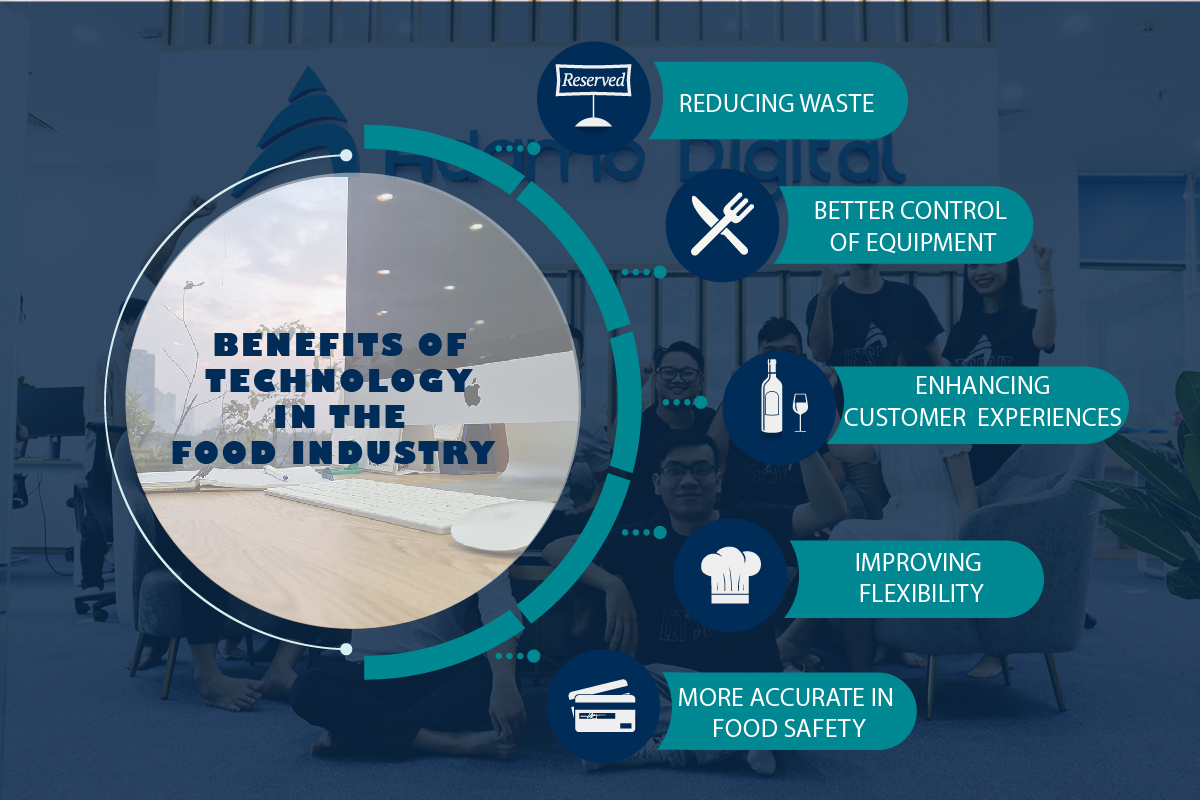Digital transformation in the F&B industry
Prior to the crisis, the F&B industry was a strong digital transformation industry that concentrated mostly on sales, marketing, and improving user experience in the service process. The COVID-19 epidemic has accelerated this process.
However, in today's environment of intense and ongoing rivalry, the F&B industry requires a framework to develop a comprehensive plan for delivering full value to its clients.

The author's 8 E-based digital transformation framework can be used to create digital transformation strategies, roadmaps, and plans that give customers a holistic and systematic experience. Its purpose is to provide service users with a synchronized and systematic value chain. The value chain is made up of 5 E acts that create value based on the 3 E value proposition foundation. The service provider will rotate across 5 E.
5 E- based value proposition
Explore: Customers will examine the service for the first time during this stage. Customers will be drawn in by engaging experiences provided by service providers. Customers often buy and use the typical products or services of the firm during this stage.
Engage: Customers must be persuaded by the enterprises to connect more deeply with their products and services at this stage by using the following criteria: 01– Customers return to utilize products and services; 02– Customers buy more services; and 03– Customers introduce and attract new customers. If a customer meets all three of the above criteria, they are considered fully engaged.
Enlarge: Businesses diversify their products and services at this stage to encourage customers to utilize more of them. Businesses also push customers to help them reach out to more customers by increasing the frequency of products and services.
Empower: Businesses develop service systems that help clients conduct services independently. Customers will have several alternatives for figuring out how the service works, when to use it, and how to use it.
Enrich: In this final level, businesses try to improve experience values by inventing or personalizing services for specific clientele. Customers must have a positive experience and remain loyal to the service during this phase.
3 E foundation
The above 5 E value chain would be incomplete without the 3 E foundation based on digital transformation, namely:
Emphathy: Based on data analytics, the most important pillar for enterprises to communicate with customers throughout all four stages is customer empathy. Enterprises will be able to analyze the value of their services as well as the best ways to offer them in order to create memorable experiences using data.
Experiences: Based on empathy data and customer journey research, businesses may leverage technology and expert human resources to create experiences that transmit emotions and extraordinary value to customers.
Ensure: Because service is intangible, it makes it difficult to measure and verify. Businesses can use digital technologies to measure or ensure service quality for clients along the service chain. Customers will have faith in you if they can inspect or evaluate the quality of the service at any time while using it.
Empathy is the first pillar of the 5 E value chain in the F&B industry. Businesses can utilize big data and AI to research trends and develop services that fulfill unmet customer needs and emotions. According to research on consumption trends, food art—art-decorated dishes, for example—will be a big trend in the near future to meet customer expectations. Empathy can also help eateries decide where to use technology in general.
Experiences will help F&B entrepreneurs handle the difficulty of communicating with clients along the service chain. Three primary pillars can be used to build a customer experience strategy: unique, simple, and quick. In the first two phases of Explore and Engage, the first pillar will lead to breakthroughs. When a customer uses a big data and facial recognition system to enter a store, the store can greet them by name and assign them a seat that they prefer.
Ensure will help customers develop faith in the restaurant's products. The metarverse is an intriguing concept. During the ordering process, when both the restaurant and the customer are on the metavese at the same time, they can see and interact with the information that the consumer has supplied. Customers will be confident in their understanding of the dish without having to enquire. Customers gain confidence from such interactions when it comes to knowing which foods pair well with beer or wine, how other dishes are mixed with this dish, and which dish to eat first and which to reserve for later. "Ensure" also includes important information like calories, salt, and so on, so that customers can follow directions by looking at the meal.
Based on the 3 E and progressing toward the 5E value chain, the 8 E-based digital transformation model will aid F&B enterprises in completing their value chain to customers. Digital transformation in the F&B industry is comparable to that of other industries in that technology, tools, and platforms must be conceived, planned, and implemented based on the value delivered. The 8 E model is also an integrated tool for ensuring excellent restaurant service and quality control. The 8 E approach supports F&B entrepreneurs in clearly understanding the two terms: "Why and "How" before purchasing technology and digital transformation solutions.










